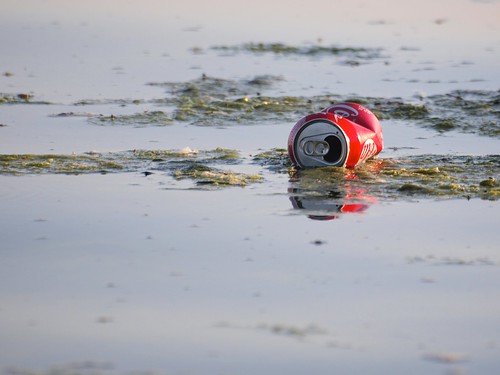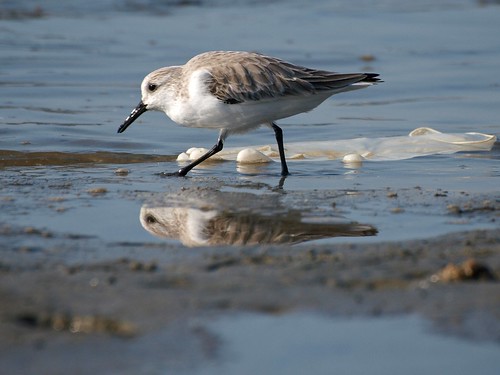Almost every outing in the natural world creates a bittersweet juxtaposition. On a planet now populated by six billion plus humans, there’s barely a stretch of beach, forest or wilderness that isn’t marred in some way by a trail of refuse.
I hang out on the shores of San Francisco Bay. I love San Francisco Bay. But like the sandpiper improvising around a discarded surgical glove, my brain has to improvise around the deluge of trash that invariably marks any walk along the shoreline.
Smell the Glove – ©ingridtaylar
I’ve seen: four-foot, mangy teddy bears nested in cord grass at high tide; an endangered Clapper Rail preening among plastic; helium balloons tangled in seaweed, 100 yards out in low tide; plovers foraging around cigarette butts; fishing line and plastic loops just waiting to entangle the next curious gull.
Here are some distressing facts from the Greenpeace document, Plastic Debris in the World’s Oceans:
- At least 267 different species are known to have suffered from entanglement or ingestion of marine debris. That means seabirds, turtles, seals, sea lions, whales and fish.
- The estimate is that around 80% of marine debris is from land-based sources. These sources include beach and tourism litter, fishing debris/lines/nets, sewage and storm drain overflow.
- The highest concentrations of shoreline debris recorded were in Indonesia (up to 29.1 items per meter2) and Sicily (up to 231 items per meter2).
- Plastics consistently make up 60 to 80 percent of marine debris.
- Animals die from encountering marine debris. They get entangled, are inhibited from moving or feeding, lose limbs, are strangled, drown, die from ingestion when plastics lodge in their system or toxics leach from ingested items.
As broad and sobering as is this Greenpeace report, on the topic of garbage, it’s just a primer in the world of trash. For an animated and accessible perspective on the impact of our “stuff,” check out Annie Leonard’s The Story of Stuff. It’s a video you can view online which documents, literally, the story of our stuff as it’s produced, used and then discarded into the environment. It deals with the whole breadth of issues associated with our appetite for consumption.
So, in an effort to document the end result of our discards on our beautiful Bay, here’s the first segment of Bay and Beach Flotsam.
** My mate and I pick up the more hazardous pieces of trash, but the amount is overwhelming and way beyond the work of four hands.
Related:
- Continent-Sized Stew of Plastic Trash Fouling the Pacific (SFgate.com)
- Plastic Debris in the World’s Oceans (Greenpeace)
- The Story of Stuff (video)
- World Population Clock





Leave A Comment